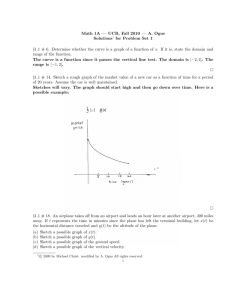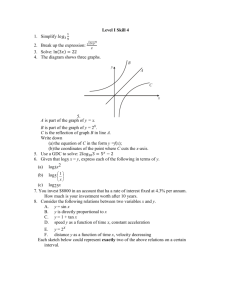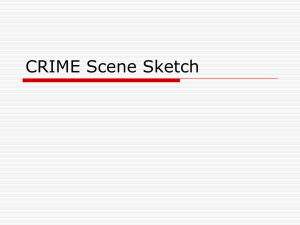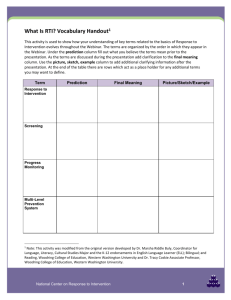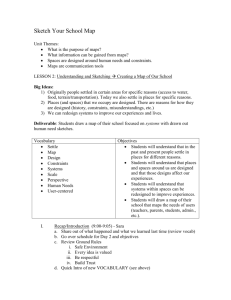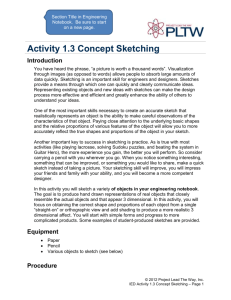Answer Key Docx - TAMU Computer Science Faculty Pages
advertisement
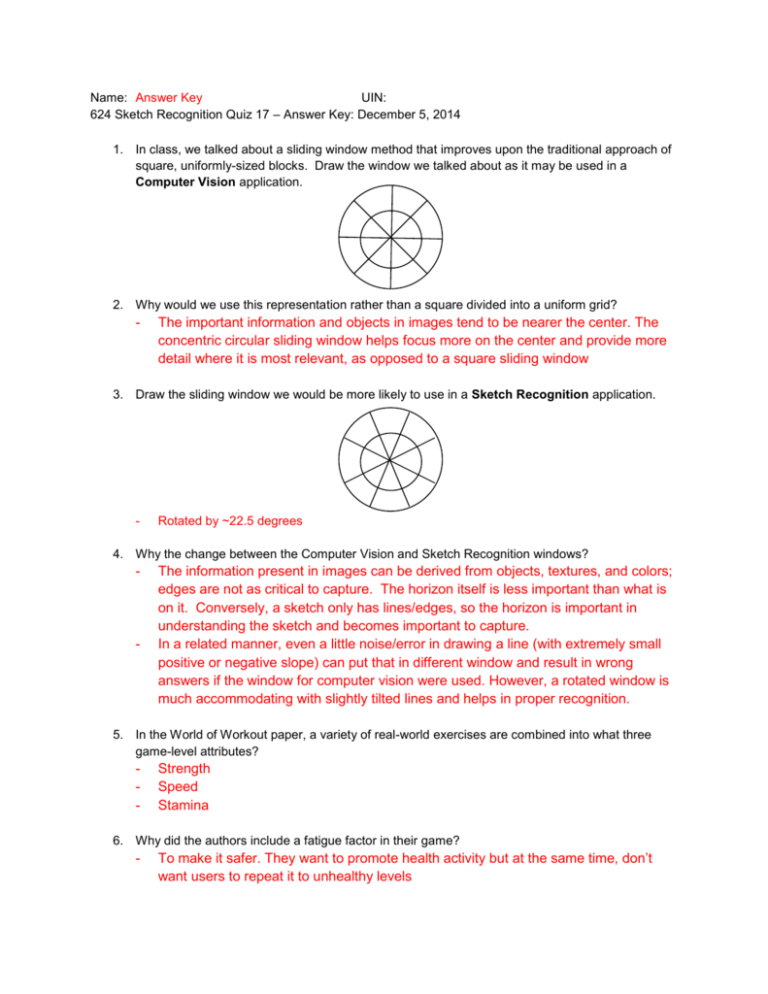
Name: Answer Key UIN: 624 Sketch Recognition Quiz 17 – Answer Key: December 5, 2014 1. In class, we talked about a sliding window method that improves upon the traditional approach of square, uniformly-sized blocks. Draw the window we talked about as it may be used in a Computer Vision application. 2. Why would we use this representation rather than a square divided into a uniform grid? - The important information and objects in images tend to be nearer the center. The concentric circular sliding window helps focus more on the center and provide more detail where it is most relevant, as opposed to a square sliding window 3. Draw the sliding window we would be more likely to use in a Sketch Recognition application. - Rotated by ~22.5 degrees 4. Why the change between the Computer Vision and Sketch Recognition windows? - - The information present in images can be derived from objects, textures, and colors; edges are not as critical to capture. The horizon itself is less important than what is on it. Conversely, a sketch only has lines/edges, so the horizon is important in understanding the sketch and becomes important to capture. In a related manner, even a little noise/error in drawing a line (with extremely small positive or negative slope) can put that in different window and result in wrong answers if the window for computer vision were used. However, a rotated window is much accommodating with slightly tilted lines and helps in proper recognition. 5. In the World of Workout paper, a variety of real-world exercises are combined into what three game-level attributes? - Strength Speed Stamina 6. Why did the authors include a fatigue factor in their game? - To make it safer. They want to promote health activity but at the same time, don’t want users to repeat it to unhealthy levels - To prevent users from cheating the system where they are not actually doing the exercise but are just pretending to walk by moving their feet. 7. Explain briefly (just 2-3 lines) how shape recognition is carried out in ‘Recognizing Interspersed Sketches Quickly’ paper. - Recognize domain-independent primitives Apply constraints and indexes on those primitives Based on that, identify higher level shapes 8. What are the three stages of the indexing algorithm used in the ‘Recognizing Interspersed Sketches Quickly’ paper? - Domain Independent Primitive Finding Domain Independent Constraint-Indexing Domain Dependent Shape Recognition 9. What is the motivation behind the KimCHI paper? - To design better Pen-based User Interfaces for kids Assess the developmental level of kids’ drawing abilities, 10. In the KimCHI paper, out of the 8 Classifiers used, which two classifiers performed better for classifying preschoolers vs. grade-schoolers? - Random Forests - Bagging


